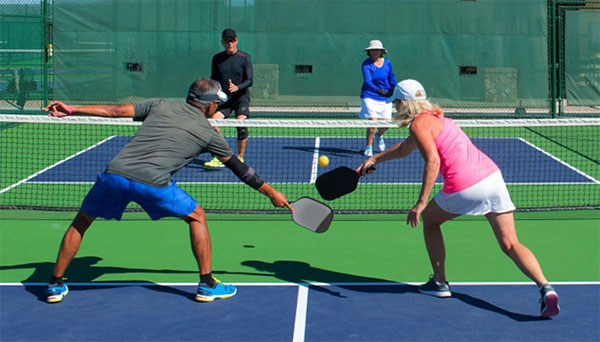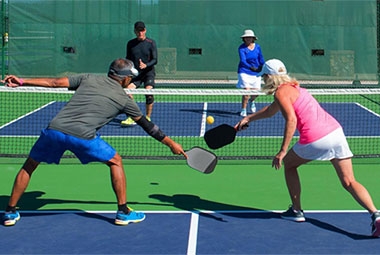
Pickleball is one of the fastest-growing sports, attracting players of all ages with its fast-paced action and social appeal. But with its rising popularity, more players are experiencing shoulder injuries from powerful serves, quick volleys, and repetitive swings. Whether you're dealing with a nagging strain or a more serious injury, understanding your treatment options is key to healing properly and getting back on the court with confidence.
Common Shoulder Injuries in Pickleball Players
Pickleball requires frequent swinging, reaching, and rapid changes in motion, making the shoulder vulnerable to several injuries, including:
- Rotator Cuff Tears: Overuse or sudden impact can lead to partial or full-thickness tears of the rotator cuff, causing pain and weakness.
- Shoulder Impingement: Repetitive overhead strokes can cause irritation of the rotator cuff tendons and bursa, leading to pain with movement.
- Labral Tears: The repetitive stress from swinging and reaching can damage the shoulder’s labrum, causing instability and discomfort.
- Bursitis and Tendinitis: Inflammation of the bursa or tendons in the shoulder can develop due to overuse, resulting in stiffness and pain.
Non-Surgical Treatment Options: Restoring Strength and Mobility
For mild to moderate shoulder injuries, non-surgical treatments can be highly effective in reducing pain and restoring function. These may include:
- Physical Therapy: Targeted exercises strengthen the shoulder muscles, improve flexibility, and promote proper mechanics to prevent future injury.
- Anti-Inflammatory Medications: NSAIDs (non-steroidal anti-inflammatory drugs) help manage pain and swelling.
- Cortisone Injections: A cortisone shot can provide temporary relief from inflammation and pain, allowing for more effective rehabilitation.
- Activity Modification: Adjusting technique, reducing intensity, and incorporating proper warm-up and cool-down routines can help prevent further damage.
When Surgery Becomes Necessary
If conservative treatments fail or if the injury is severe, surgical intervention may be the best option to treat pickleball injuries. Advanced surgical techniques include:
- Arthroscopic Rotator Cuff Repair: Minimally invasive surgery to reattach torn tendons and restore strength.
- Labral Repair: Arthroscopic procedures to fix labral tears and stabilize the shoulder.
- Subacromial Decompression: Removes bone spurs and inflamed tissue to relieve impingement symptoms.
Ignoring shoulder pain in pickleball can do more than just disrupt your game—it can lead to more serious issues like rotator cuff tears, tendonitis, or chronic joint instability. The repetitive overhead motions and quick reactions in pickleball put significant strain on the shoulder, and delaying treatment can prolong recovery, limiting your ability to serve, volley, and swing with power. If left unaddressed, persistent pain may force you to modify your playing style or even keep you off the court entirely. Prioritizing early diagnosis, strengthening exercises, and proper technique can help you stay competitive and avoid unnecessary setbacks.
AUTHOR: Brian W. Hill, M.D. is a board-certified shoulder surgeon at Palm Beach Orthopedic Institute. He is an expert in advanced reconstructive and arthroscopic techniques, and serves as an assistant team physician for the Washington Nationals and their affiliates. Dr. Hill treats shoulder injuries and arthritis with a focus on patient-centered care and clear communication.






